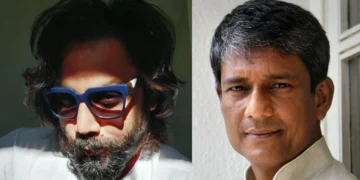The recent uproar over the removal of the Tamil film Annapoorani from Netflix has stirred a heated debate about censorship in India’s entertainment industry. Acclaimed filmmaker Vetrimaaran has pointedly criticized Netflix for pulling out a Central Board of Film Certification (CBFC) approved film, suggesting the streaming giant is overreaching and undermining the CBFC’s authority.
Vetrimaaran’s concerns highlight a growing worry about the shrinking space for artistic expression in India. The incident with Annapoorani, starring the renowned Nayanthara, raises critical questions about the influence of external pressures and social media on creative freedom. The film was removed following an online outcry over a scene interpreted as suggesting that Lord Rama was a meat-eater, drawing from Valmiki’s Ramayana. This led to boycott calls against Netflix and protests regarding the film’s religious portrayal.
Written and directed by Nilesh Krishnaa, Annapoorani initially launched on December 1 with lukewarm box office results. However, it shot into the spotlight when Hindi-speaking audiences discovered it on Netflix, coinciding with the upcoming inauguration of the Ram Temple in Ayodhya.
In reaction to the protests and political pressures, Zee Studios, the film’s producers, apologized and had Netflix withdraw the film. They plan to re-release Annapoorani on OTT platforms after editing the contentious parts, illustrating the tenuous state of freedom of expression in India’s digital and artistic realms.
The Annapoorani case extends into a broader debate on OTT content regulation in India. The removal of a CBFC-approved film underscores a trend of censorship influenced by concerns over obscenity, religious sentiments, and public decency. This environment is fostering a culture of self-censorship among filmmakers and streaming platforms, who tread carefully around sensitive subjects.
Adding to these concerns is the Draft Broadcasting Bill, 2023, proposed by the Information & Broadcasting Ministry. This bill, seeking to regulate various broadcasting services under a single law, has been criticized for potentially escalating censorship on OTT platforms. The proposed establishment of a Content Evaluation Committee (CEC) and the requirement for streaming platforms to seek CEC approval before publishing content, raises alarms about increased government control over digital content.
The Annapoorani controversy, thus, becomes a focal point in the ongoing discourse about balancing creative liberty, cultural sensitivities, and regulatory control in India’s dynamic digital entertainment landscape. Stay tuned for more insights on such pressing issues at www.climaxahh.com! ????????????






















